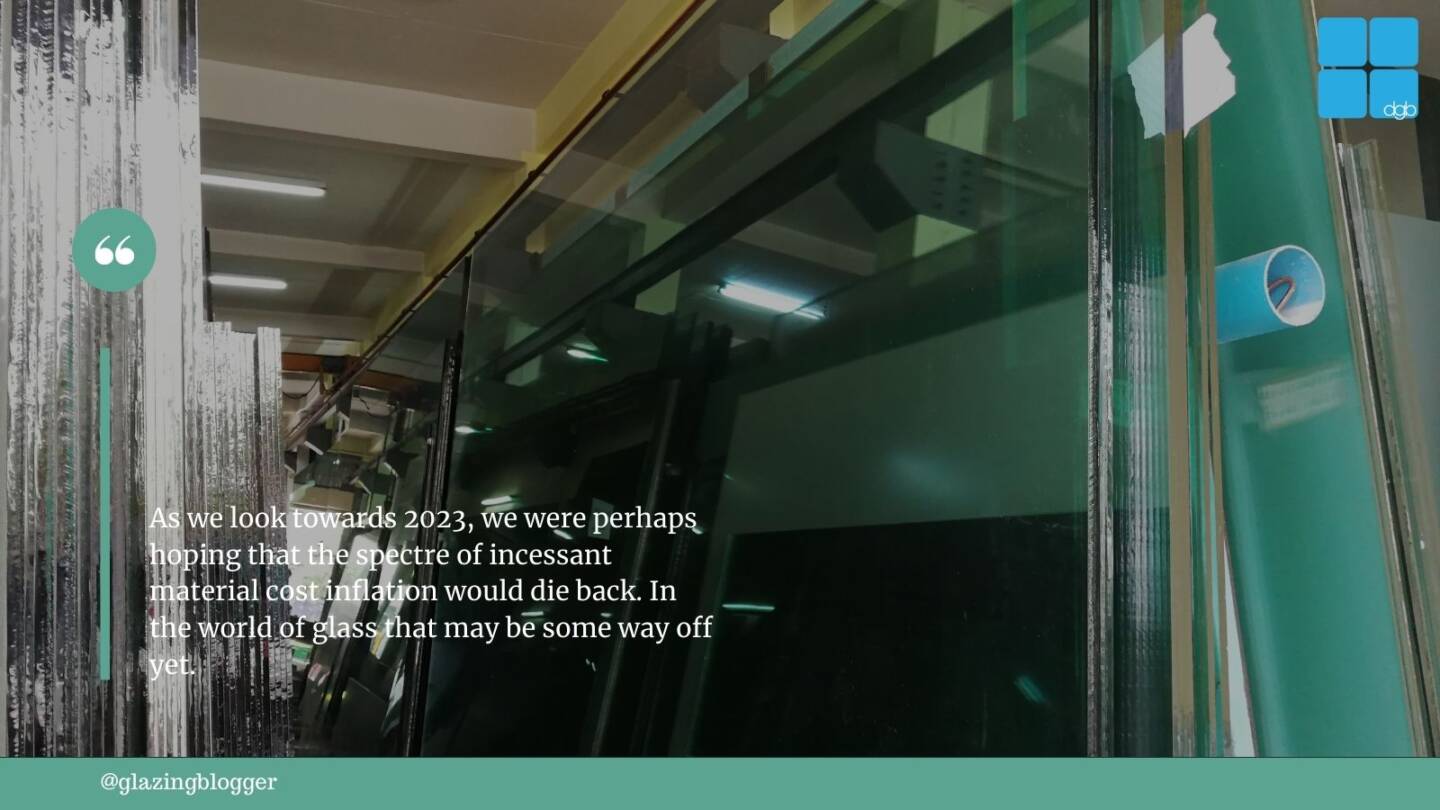Some scary predictions today on Halloween.
In a recent Linkedin post, Ryan Green, MD of Clayton Glass, explained the situation with float glass production both in the UK and Europe. Spoilers, the outlook doesn’t look great:
Glass prices up on pressures
Think about what is being predicted in that post. We know a recession is coming in the UK and Europe. In some parts, we’re already in it. But despite that downturn, the disruption in the float glass part of the supply chain is set to be significant enough to still see the industry face potential shortages, which will force prices higher.
The more sceptical thinkers out there will begin to question the timing of these plant shutdowns and the likelihood of pinch points coming in the supply of glass once again.
It does appear that we will not be out of the woods when it comes to the secure supply of glass and prices. As we look towards 2023, we were perhaps hoping that the spectre of incessant material cost inflation would die back. In the world of glass that may be some way off yet.
In response to the question Ryan asks in his post on Linkedin, no, it’s not sustainable. But short of snapping our fingers and another three new float plants opening up on January 1st 2023, there’s very little we can do. IGU suppliers are at the mercy of float glass suppliers. If plants are going to go down for maintenance there is very little that can be done.
But perhaps it’s not as bad as you might think. We have gone through the worst supply chain crunch in decades in our industry. Maybe ever. We all had to adapt to a trading environment where products could disappear and become unavailable at a week’s notice. Fabricators and IGU suppliers had to become more nimble and more proactive to protect their supply chains. The silver lining in this particular problem down the road is that we have been here before. We have lived through it once, we adapted and were able to navigate it.
We did so by keeping communication between the supplier and installer open and regular. Suppliers worked hard to ensure supply could be secured both in the short and long term. Should we begin to see a glass crunch in 2023, we have to go back to what we were doing in 2020 and 2021. This is no longer new territory.
Inflation
Other areas of our sector have seen somewhat of a reprieve in material price inflation. I remember during the worst of it we were getting two to four price increase emails and letters in a week sometimes. It was a very tricky situation to pick our way through, which would often lead to quotes being prices a couple of weeks ago being no longer relevant.
Thankfully, that particular situation has calmed and the rate of increases has slowed significantly. Although I would not say back to pre-pandemic levels. We have been notified of a jump in resin prices to be implemented by our fabricators in the new year so there is that to look forward to.
Glass has been rather less settled in comparison to other material groups in 2022. It never really seemed to settle properly. Energy surcharges were going up and down month to month, with a mix of IGU suppliers either passing on those increases or taking it on the chin.
Given the statement above, I think that kind of insight means we can expect glass prices to rise again in 2023. The difficulty at the moment is that rising prices come against a backdrop of a potentially severe recession, a cost of living crisis, rock-bottom consumer confidence and an energy crisis. Price inflation that contributes to end users paying more for their new windows and doors is certainly not ideal.
But as I have constantly said when it comes to these kinds of subjects, the trading environment in 2023 and 2024 demands that we do not sell on price as the primary USP but on quality and customer service. These are the two single most important USPs that can outweigh concerns over price. If the end user believes that what they are paying for is superior to the next company and that the service they will get from a company is better, then price, even a high one, falls down the list of priorities.
Sadly, I believe that a new race to the bottom has already begun. But for installers and fabricators who can stand firm and resist the lazy archaic tendencies which have landed us in the same repeated problem, they can prosper in times of difficulty.
To get weekly updates from DGB sent to your inbox, enter your email address in the space below to subscribe:
By subscribing you agree to DGB sending you weekly email updates with all published content on this website, as well as any major updates to the services being run on DGB. Your data is never passed on to third parties or used by external advertising companies. Your data is protected and stored on secure servers run by Fivenines UK Ltd.






